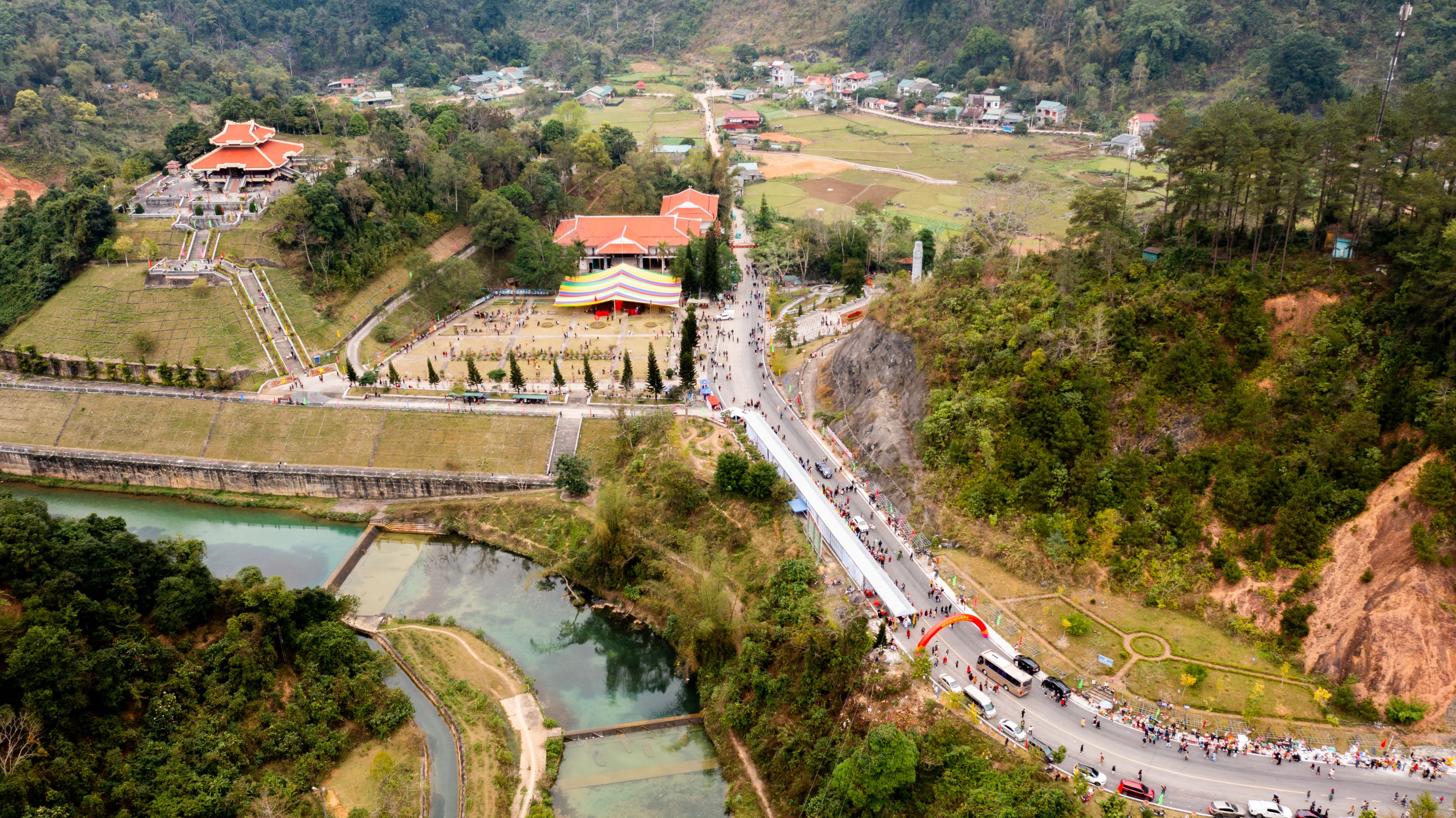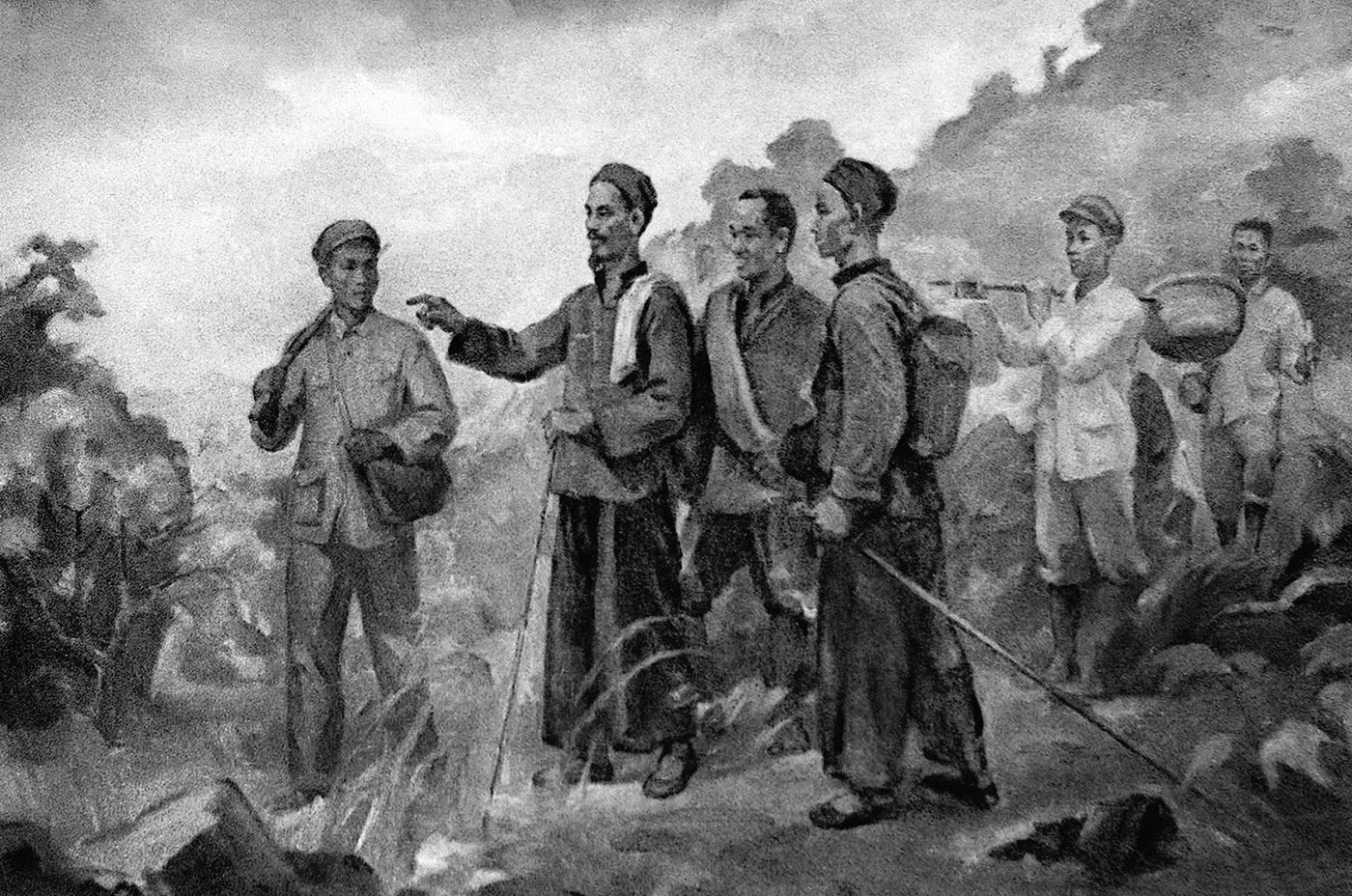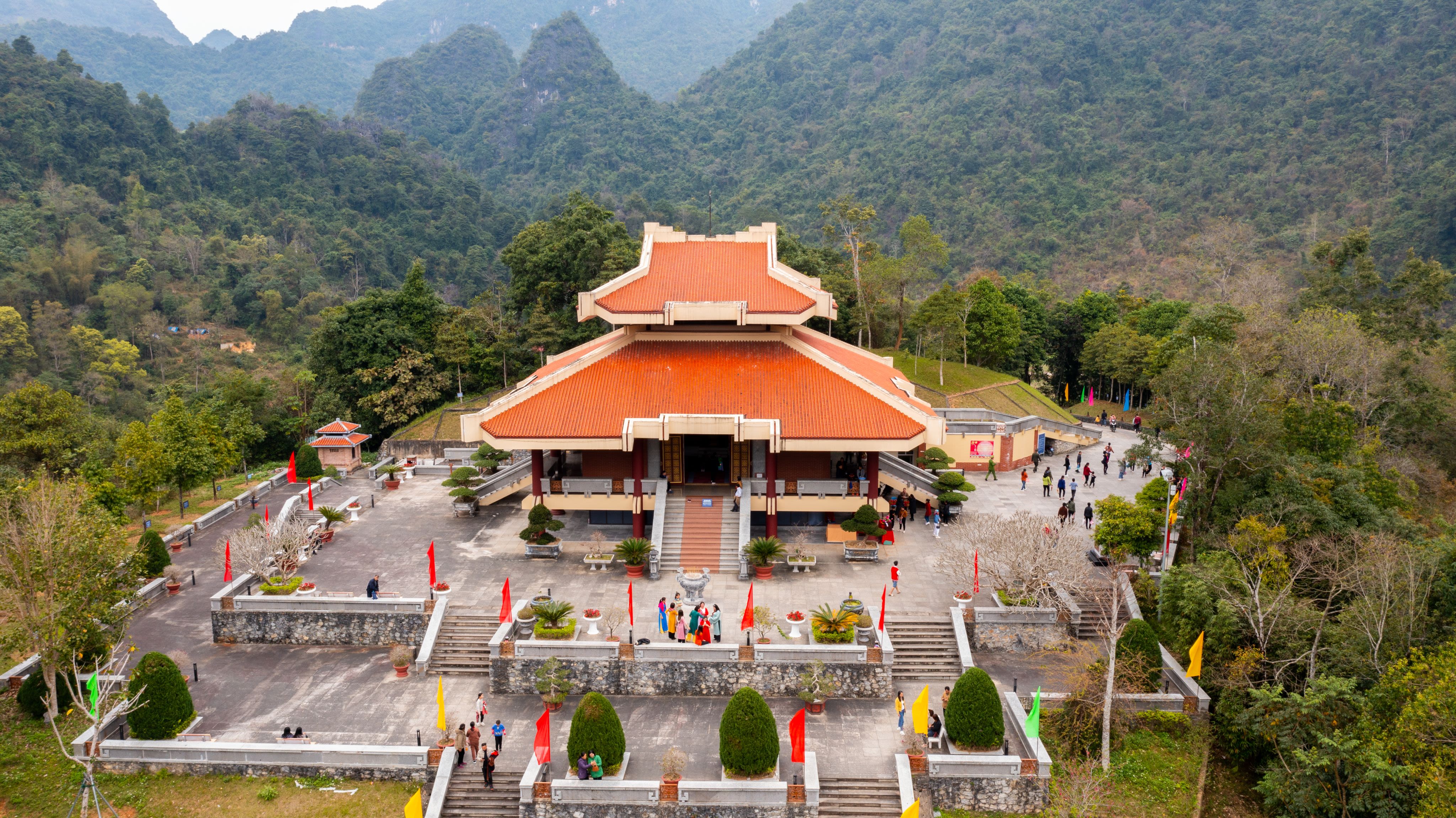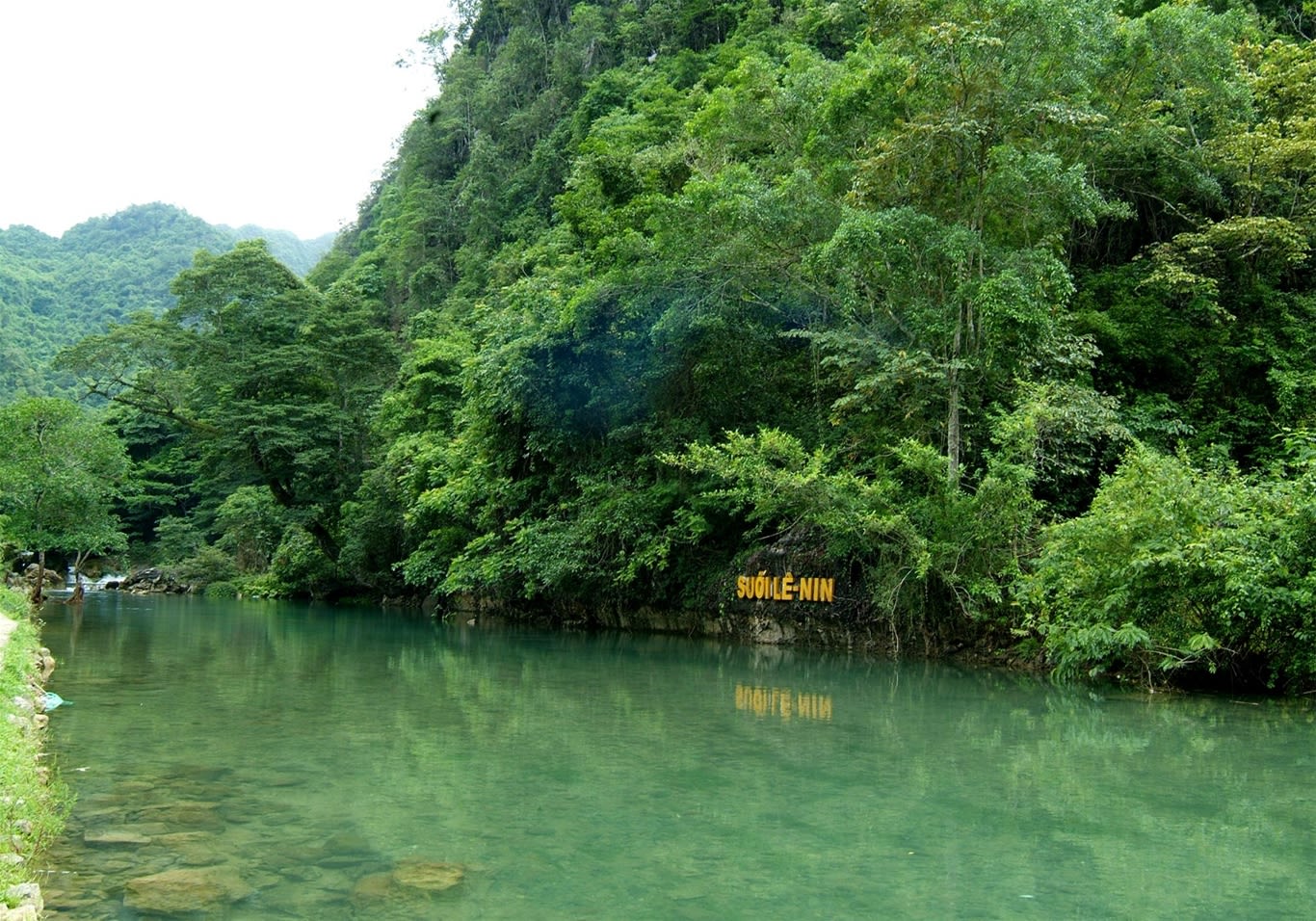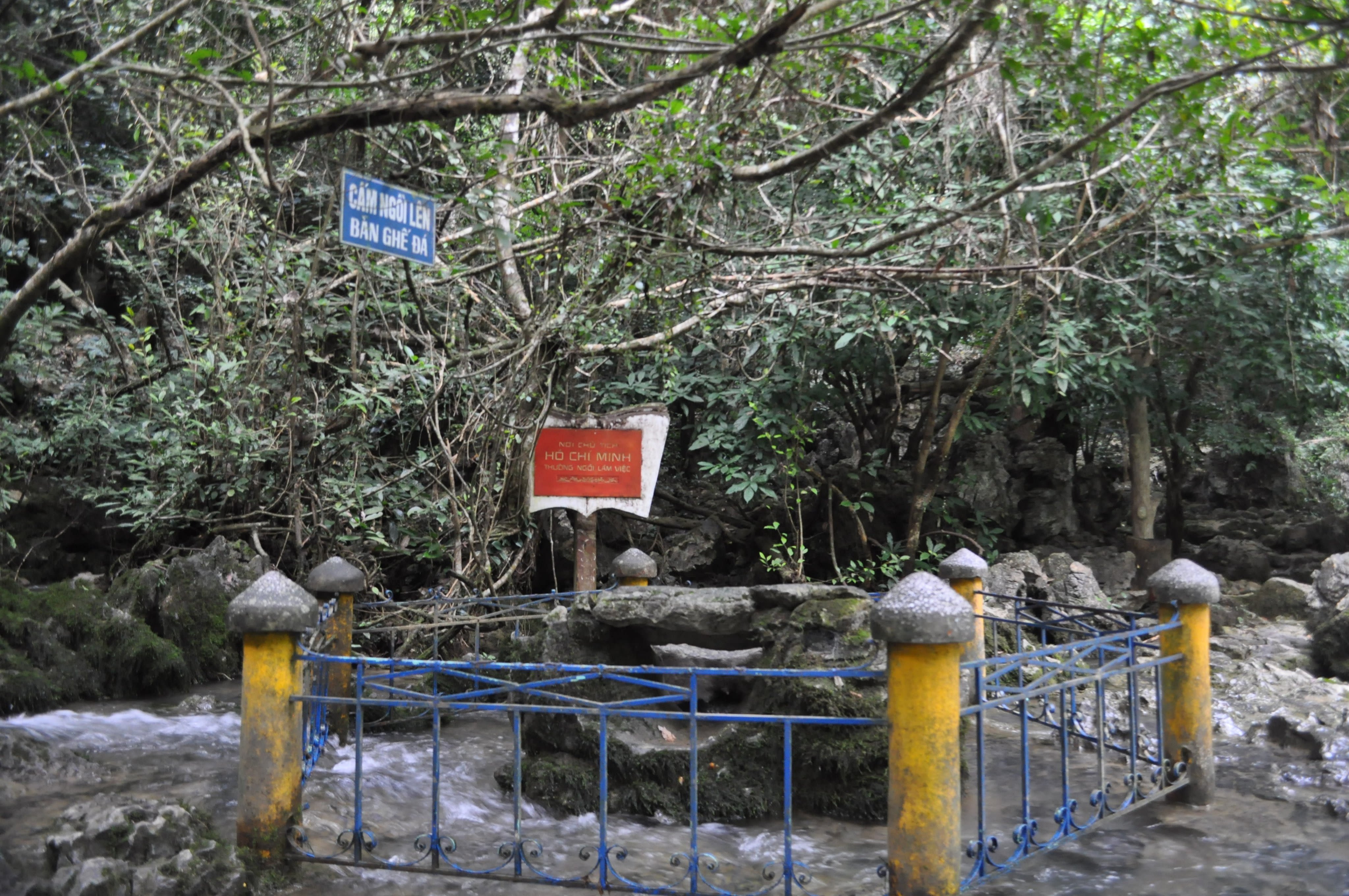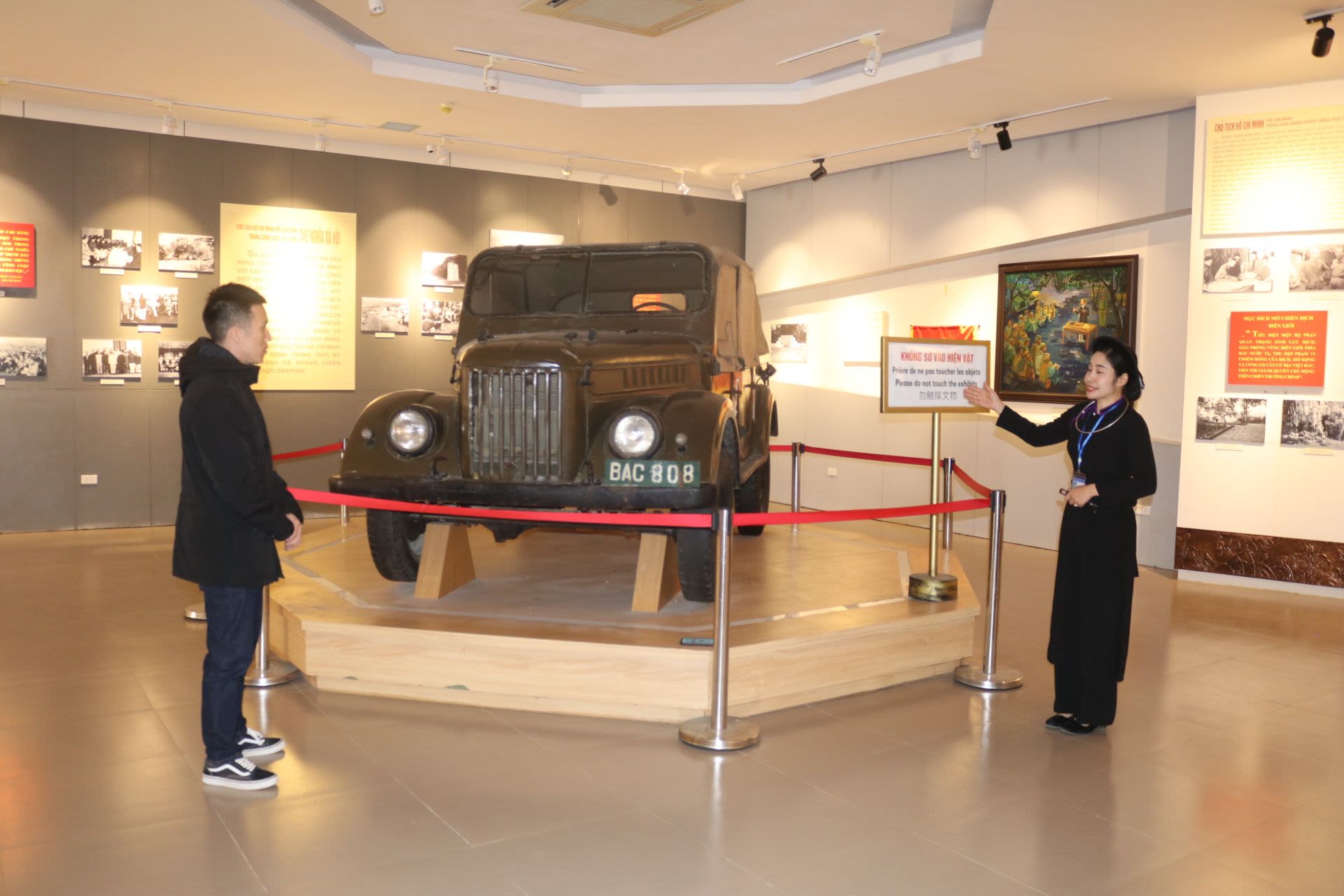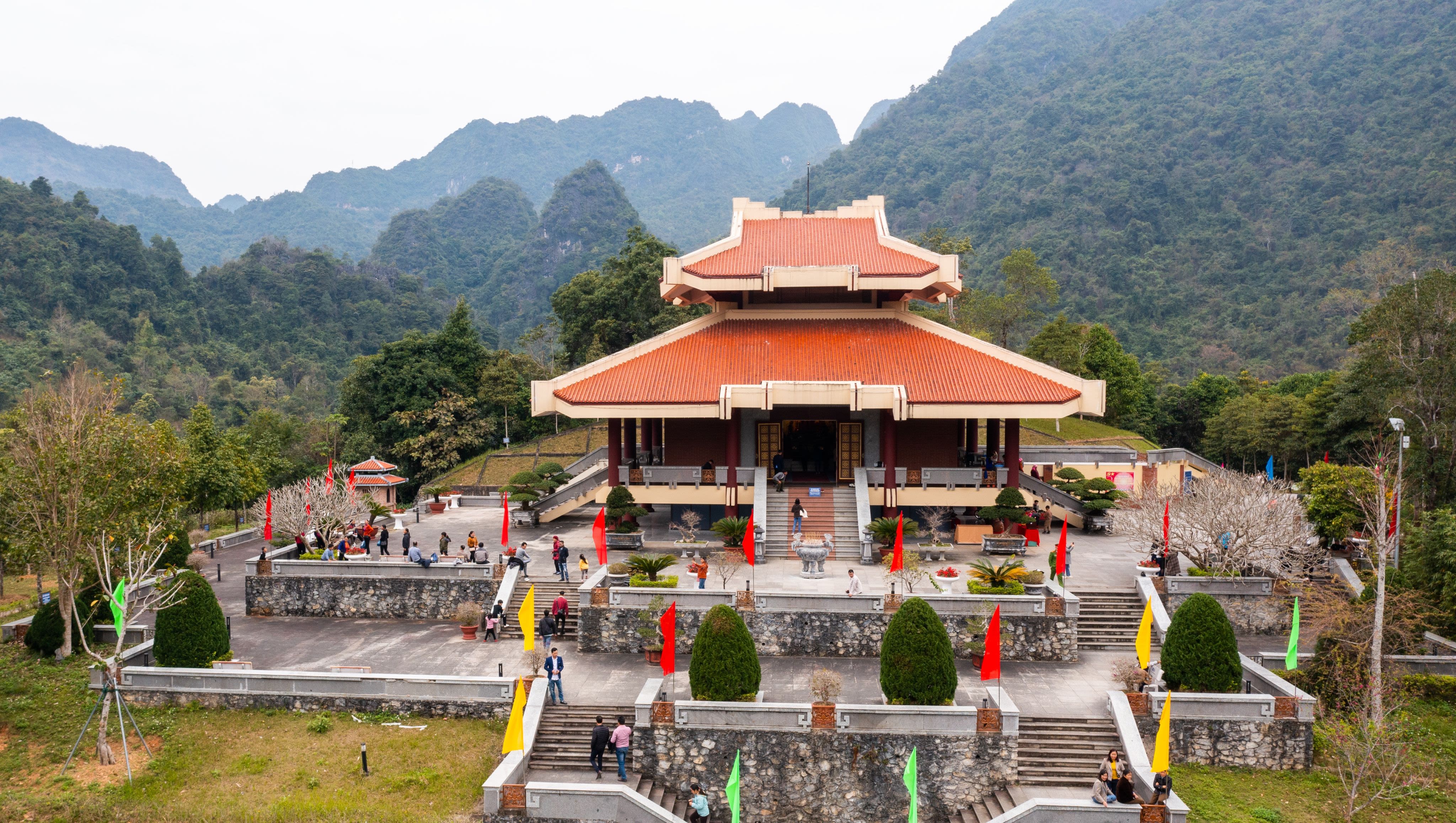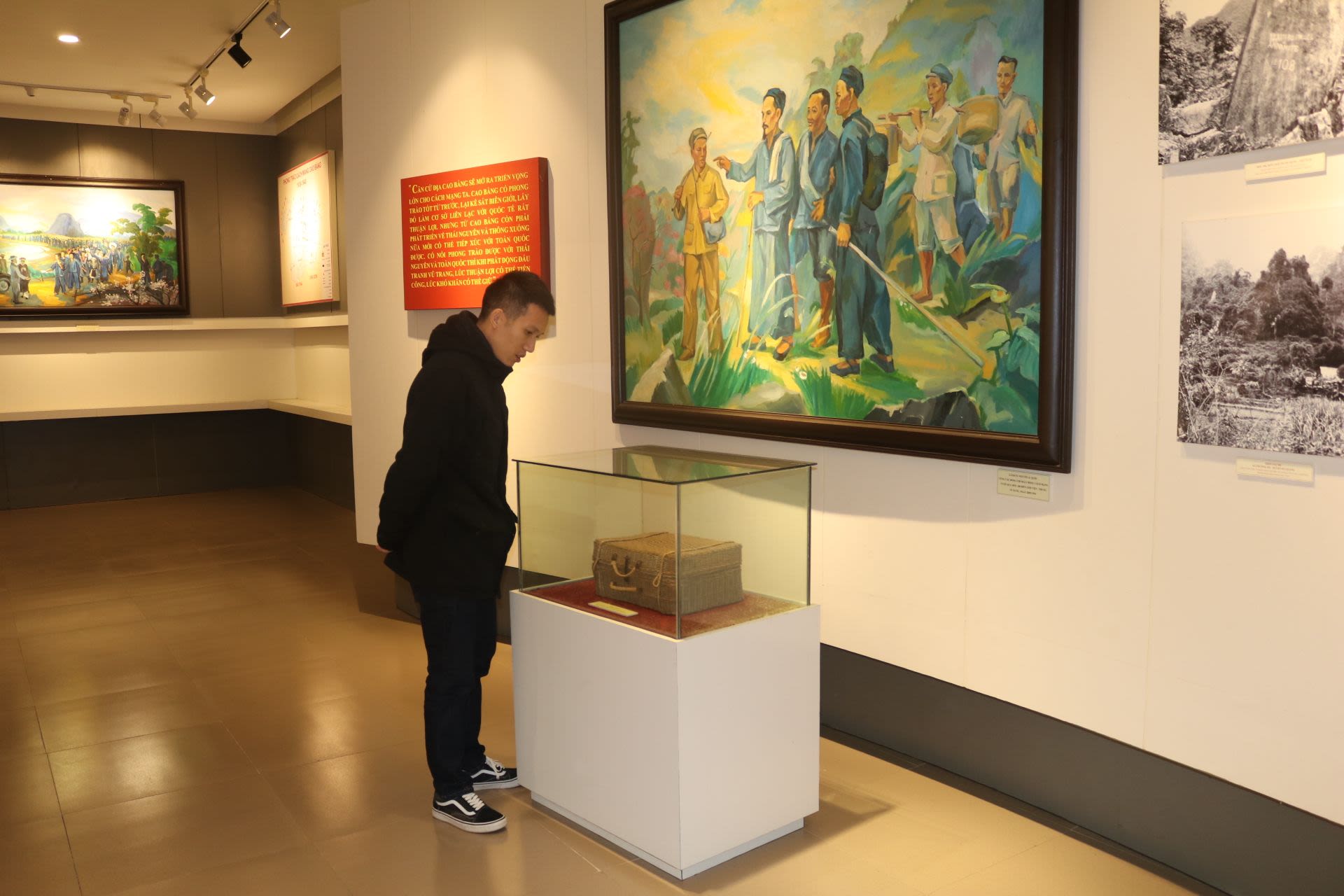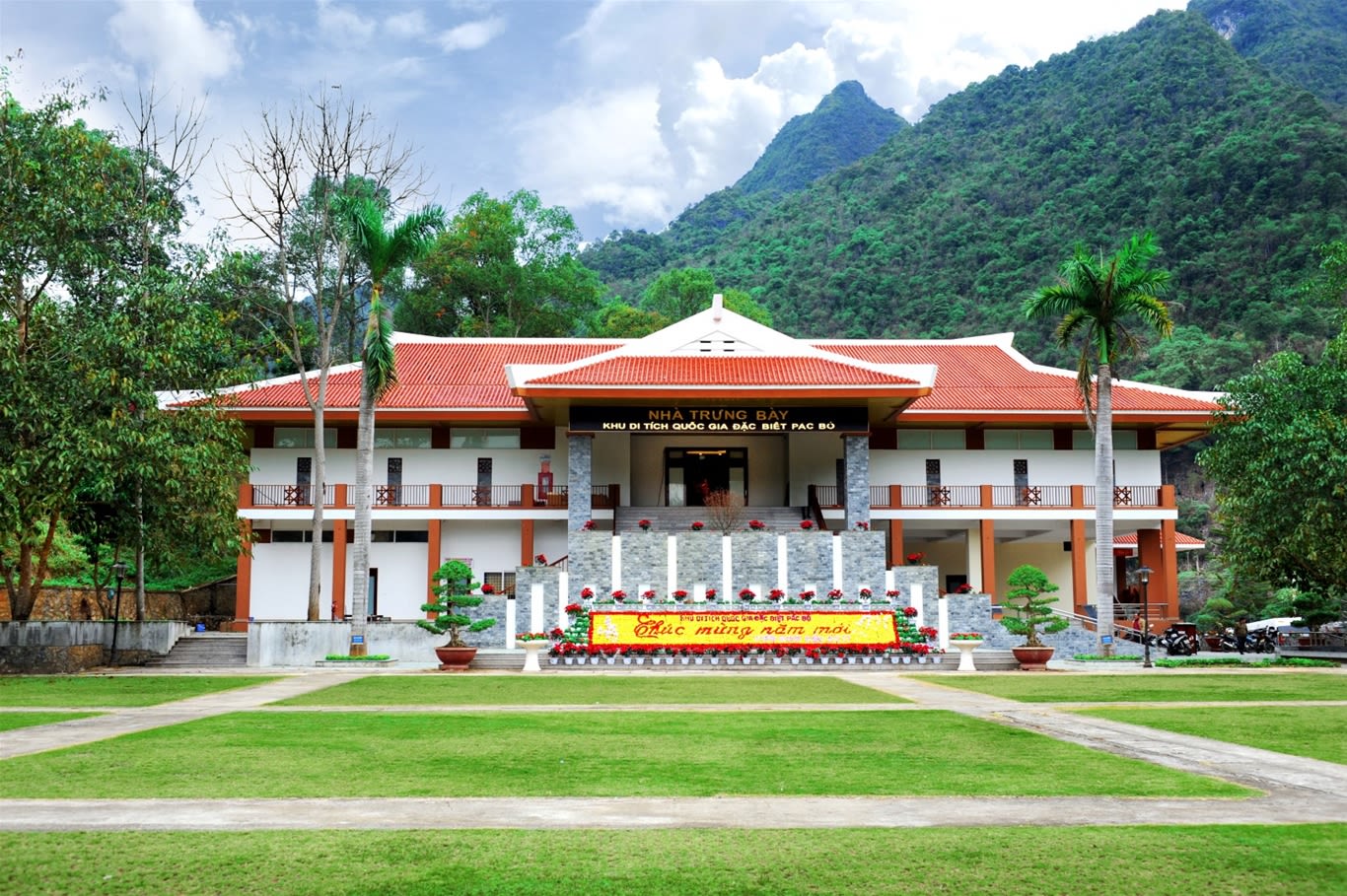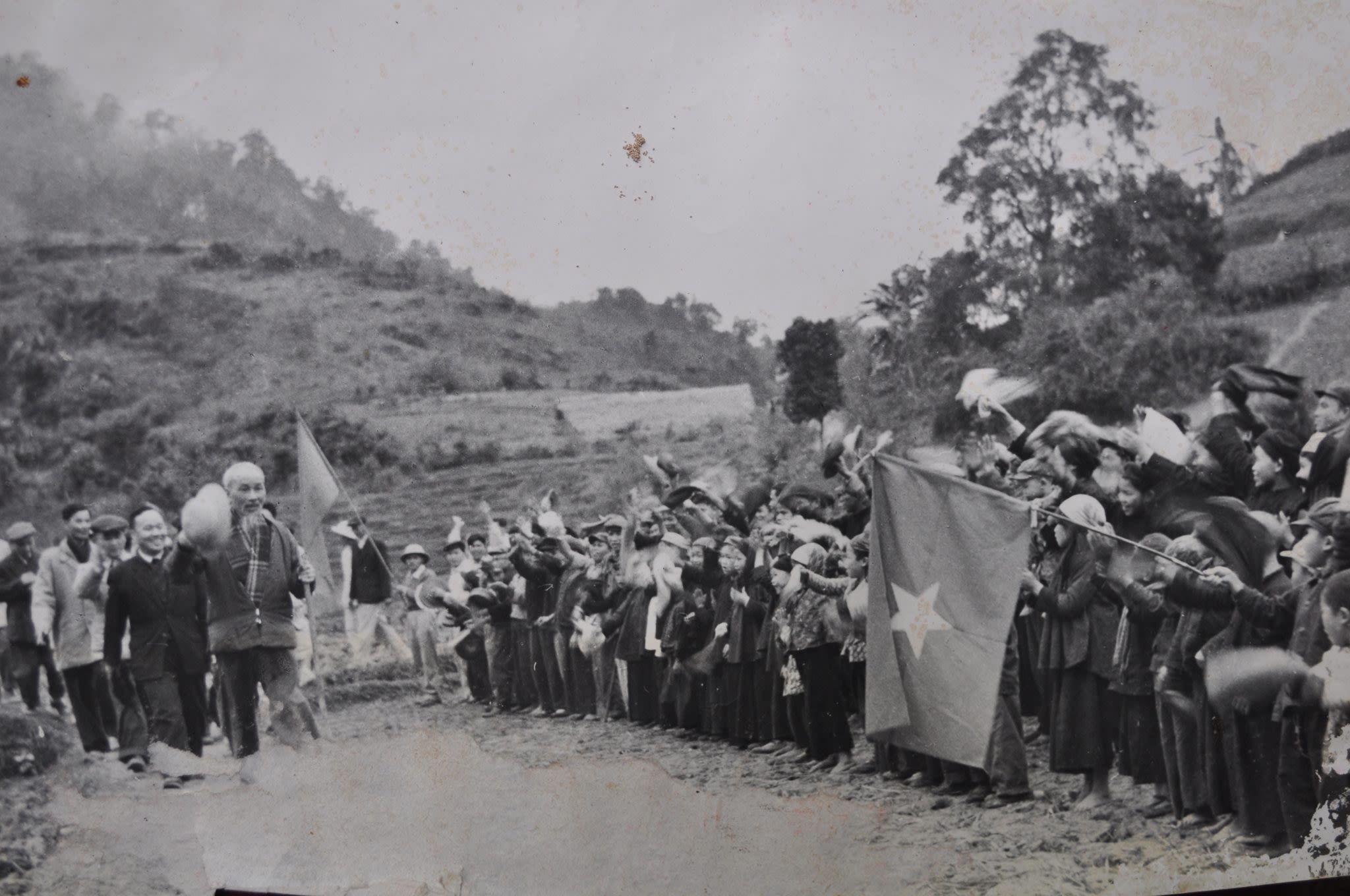
A visit to Pac Bo — where Uncle Ho directly led the Vietnamese revolution
Eighty-four years ago, on January 28, 1941, after 30 years of travelling the world in search of a way to salvage the country, Uncle Ho, then known as Nguyen Ai Quoc, returned to Pac Bo to directly lead the Vietnamese revolution from one victory to another.
Today, the special national site of Pac Bo has been developed into a clean and well-kept site, becoming a tourism destination for educating generations, especially young people, about the revolutionary tradition.
A RED TOURISM DESTINATION
The Pac Bo Special National Site is located in Pac Bo Hamlet, Truong Ha Commune, Ha Quang District, about 55 kilometres from the centre of Cao Bang Province’s eponymous capital city.
The Pac Bo Special National Site in Pac Bo Hamlet, Truong Ha Commune, Ha Quang District, Cao Bang Province.
The Pac Bo Special National Site in Pac Bo Hamlet, Truong Ha Commune, Ha Quang District, Cao Bang Province.
Here, on January 28, 1941, Nguyen Ai Quoc and five of his comrades returned to Vietnam via border marker 108 on the Vietnam-China border.
Moved by that special sacred moment, the late poet To Huu wrote some verses that still resonate today:
“... Oh, this spring morning of ‘41
White plum blossoms bloom in the border forest
Uncle Ho returns... Silence. A bird sings
Sweetly by the reed bank, filled with joy
Uncle Ho has returned, oh Motherland
With love, the earth warms with his touch
Thirty years his feet never rested
Until now, finally arriving here!...”
(An excerpt from the epic poem “Following Uncle Ho’s Footsteps”)
Thanks to the investment and construction attention of all levels, sectors and localities, the Pac Bo Special National Relic Site has been built in a spacious manner, worthy of becoming a “red address” for many visitors from near and far.
Dao Van Mui, Director of the Management Board of Special National Relics of Cao Bang province shared that in 2024, the Management Board welcomed hundreds of thousands of people to visit, offer incense and flowers, and report to Uncle Ho at the Ho Chi Minh Temple in the relic site.
The Ho Chi Minh Temple in the Pac Bo Special National Relic Site is located on a high hill, with strong winds all year round.
The Ho Chi Minh Temple in the Pac Bo Special National Relic Site is located on a high hill, with strong winds all year round.
Within the relic site, located on a high hill, is the Ho Chi Minh Temple. The project was built with the support of Ho Chi Minh City, the capital city of Hanoi, and Nghe An Province. The Ho Chi Minh Temple was inaugurated in May 2011 to welcome visitors to offer incense and flowers on the occasion of the 121st anniversary of his birth.
Below, opposite the central courtyard in the Relic Site, is the Km0 milestone of the Ho Chi Minh Road. This is the starting point of a national traffic artery stretching from Cao Bang to Ca Mau with a total length of 3,167 km. The location of the Ho Chi Minh Road Km0 milestone is a favourite check-in and souvenir photo spot when visiting the Pac Bo National Special Relic Site.
Continuing into the relic site, visitors will come to Lenin stream, Marx mountain, where, during his days of living and working at Pac Bo, he wrote the majestic Pac Bo poem:
Far away mountains, far away rivers
It doesn’t have to be vast to be called
Here is Lenin stream, there is Marx mountain
Two hands built a country.
Continuing the journey, into the relic site, visitors will admire the charming landscape, with the clear Lenin stream, winding and murmuring as if telling the story of the past, years ago, Uncle Ho was here, living and working with the whole Party, army, people in fighting to regain independence and freedom for the nation.
At the Coc Bo source relic cluster, there is Coc Bo Cave, where Uncle Ho lived and worked in the early days of returning to the country. Here is the stone table where he sat and worked during those years.
Visiting the Pac Bo National Special Relic Site, tourist Tran Minh Hung from Hanoi was moved to share: “Coming to the relic site helps me understand more about the life and revolutionary career of President Ho Chi Minh, the beloved leader, the Father of the nation who devoted and sacrificed his whole life for the country, for the happiness of the people.”
A tour guide of Pac Bo National Special Relic Site introduces the car that transported President Ho Chi Minh during his working visit to Cao Bang Province in 1961.
A tour guide of Pac Bo National Special Relic Site introduces the car that transported President Ho Chi Minh during his working visit to Cao Bang Province in 1961.
President Ho Chi Minh Temple at Pac Bo National Special Relic Site
President Ho Chi Minh Temple at Pac Bo National Special Relic Site
The exhibition house at Pac Bo National Special Relic Site displays many valuable images and artefacts about the period when President Ho Chi Minh lived and worked in Pac Bo.
The exhibition house at Pac Bo National Special Relic Site displays many valuable images and artefacts about the period when President Ho Chi Minh lived and worked in Pac Bo.
PRESERVING AND PROMOTING THE HISTORICAL VALUE OF THE RELIC SITE
In recent years, the Management Board of Special National Relic Sites of Cao Bang Province has paid attention to researching and coordinating with relevant units to effectively preserve and promote the value of Pac Bo National Special Relic Site.
At the same time, the management board has prioritised in training, and building a team of tour guides who are well-qualified and have an inspiring voice in introducing the site to visitors
Currently, the management board has developed a team of 12 tour guides, including Chinese and English-speaking tour guides, who are ready to serve tourists.
The management board set up stalls selling souvenirs and local products, creating conditions for local people in Pac Bo Hamlet to participate in providing services to tourists, thus facilitating their sustainable livelihood and improving their income from tourism development.
At the beginning of 1941, Nguyen Ai Quoc, along with five comrades, returned to Vietnam and stayed at the home of Ly Quoc Sung before moving to Coc Bo Cave, Lung Lan Cave, and Khuoi Nam Hut. From May 10 to 19, 1941, the 8th Conference of the Party Central Committee took place here. The conference thoroughly assessed the domestic and international situation, decided to establish the Viet Minh Front, build revolutionary bases, develop guerrilla warfare, and launch an armed uprising to seize power nationwide.
On December 22, 1944, in Tran Hung Dao Forest, the Vietnam Propaganda Liberation Army was founded with 34 soldiers under the command of Comrade Vo Nguyen Giap.
During this period, Ho Chi Minh compiled many important documents, including: The History of the Communist Party of the Soviet Union, Guerrilla Warfare Tactics, Party Regulations, National Salvation for Women, National Salvation for the Elderly, National Salvation for Youth, and most notably, the Letter to Compatriots (June 6, 1941). In this letter, he called on the entire population to unite in the fight against common enemies—the French colonialists, Japanese fascists, and traitors—to achieve independence and freedom.
Hoang Thi Phan, a resident of Pac Bo Hamlet, Truong Ha Commune, and the daughter-in-law of veteran revolutionary Hoang Thi Khin (who provided meals for Ho Chi Minh during his time in Pac Bo), shared that on holidays and during the Lunar New Year, a large number of visitors come to explore the historical site. Special days include April 30, May 1, the anniversary of President Ho Chi Minh’s birth on May 19, and National Day on September 2.
"Thanks to the support and arrangement for selling goods and taking photos for tourists at the historical site, my family's income has improved, ensuring a prosperous and happy life," said Phan.
The Pac Bo Special National Historic Site, where leader Nguyen Ai Quoc returned to Vietnam to directly lead the revolutionary movement, has been continuously invested in and preserved to match its historical significance, becoming a "red" address for heritage tourism and attracting visitors.
Large numbers of tourists from different generations visit the Pac Bo Special National Historic Site during holidays and festivals.
Large numbers of tourists from different generations visit the Pac Bo Special National Historic Site during holidays and festivals.
Published: January, 2025
Production Manager: Le Hong Van
Content: Minh Tuan
Translation: NDO
Design: NDO
Photos: Cao Bang Provincial Department of Culture, Sports and Tourism; Nhan Dan
